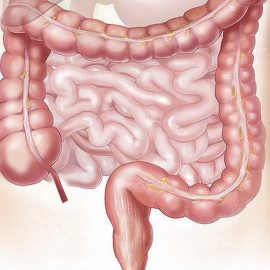

This article is an excerpt from the Shortform summary of "The Hot Zone" by Richard Preston. Shortform has the world's best summaries of books you should be reading.
Like this article? Sign up for a free trial here .
Who is Dr. Shem Musoke? Did Dr. Musoke contract Ebola?
Dr. Shem Musoke was a doctor at a hospital in Nairobi, and treated Ebola patient Charles Monet. Dr. Shem Musoke later became ill with the virus, and made a full recovery.
Keep reading to find out how Dr. Shem Musoke contracted the virus, and how he survived it.
Dr. Shem Musoke Treats Ebola Patient
The nurses wheeled Monet—barely alive—into the intensive care unit, where a young doctor named Dr. Shem Musoke inspected him.
Musoke had no idea what kind of illness this was, but his first priority was to help Monet breathe, which was becoming increasingly difficult as he hemorrhaged and his airways filled with blood and mucus. Without wearing gloves, Musoke put his finger in Monet’s mouth to clear the blood and mucus so he could insert the laryngoscope.
As Musoke leaned close to Monet’s face, peering down his throat, Monet spewed black vomit all over Musoke, the gurney, and the floor around them. Bits of vomit landed in Musoke’s eyes and mouth.
Musoke got Monet breathing again, but Monet was losing so much blood that his blood pressure was plummeting. Musoke attempted to give him a blood transfusion, but each time he tried inserting the needle, Monet’s vein gave way and blood came pouring out, unable to clot. At the same time, Monet continued to hemorrhage from his bowels.
Monet fell deeper into a coma and died hours later. As doctors performed the autopsy, Monet’s body looked like it had been dead for days, not hours. Monet’s liver was yellow and partially liquefied, and his intestinal lining had shed—both of which are common in days-old corpses.
Musoke Breaks With Symptoms
Nine days after treating Monet, Musoke got a backache and his eyes became red. Musoke suspected he had malaria. He took malaria pills and had an antimalarial injection, but neither helped. It seemed like Dr. Shem Musoke’s Ebola symptoms were different from Charles Monet’s.
Then, Dr. Shem Musoke’s Ebola symptoms worsened. He developed a fever, aches throughout his body, and abdominal pain. He began to think he had typhoid fever, but the antibiotics he took for it did nothing.
Musoke continued to work at the hospital, and he kept getting worse. Soon, he developed jaundice.
Finally, Musoke turned to another doctor at his hospital, Antonia Bagshawe, for treatment. Bagshawe suspected gallstones or a liver abscess, which would explain the fever, abdominal pain, and jaundice. However, an ultrasound showed nothing more than an enlarged liver.
Bagshawe suggested exploratory surgery, but the operation provided no answers—in fact, it only raised questions. There were no gallstones, but Musoke’s liver was swollen and red, and no matter what the surgeons did, they couldn’t stop the bleeding. Musoke’s blood wouldn’t coagulate, and even a surgical gel foam that helps stop bleeding had no effect.
After surgery, Musoke’s kidneys started failing and he was quickly getting worse.
Another doctor suspected that a virus was behind Musoke’s strange symptoms. He collected a blood sample for testing and sent it to South Africa’s National Institute of Virology and to the Centers for Disease Control in the United States.
Musoke ultimately recovered completely, and none of the other medical staff at the hospital became infected. However, the microbreak at Nairobi Hospital was a warning of what could happen on a much larger scale if the virus spread further.
Soon afterward, the doctor who’d sent Musoke’s blood sample got a call that the South African laboratory had found Marburg virus in Musoke’s blood. Though he didn’t know it at the time, Dr. Shem Musoke had survived Ebola.

———End of Preview———
Like what you just read? Read the rest of the world's best summary of Richard Preston's "The Hot Zone" at Shortform .
Here's what you'll find in our full The Hot Zone summary :
- The many different strains of Ebola, including the deadliest kind with a kill rate of 90%
- How scientists unraveled the mystery of a new strain of Ebola
- How Ebola could become airborne, becoming one of the deadliest viruses known






